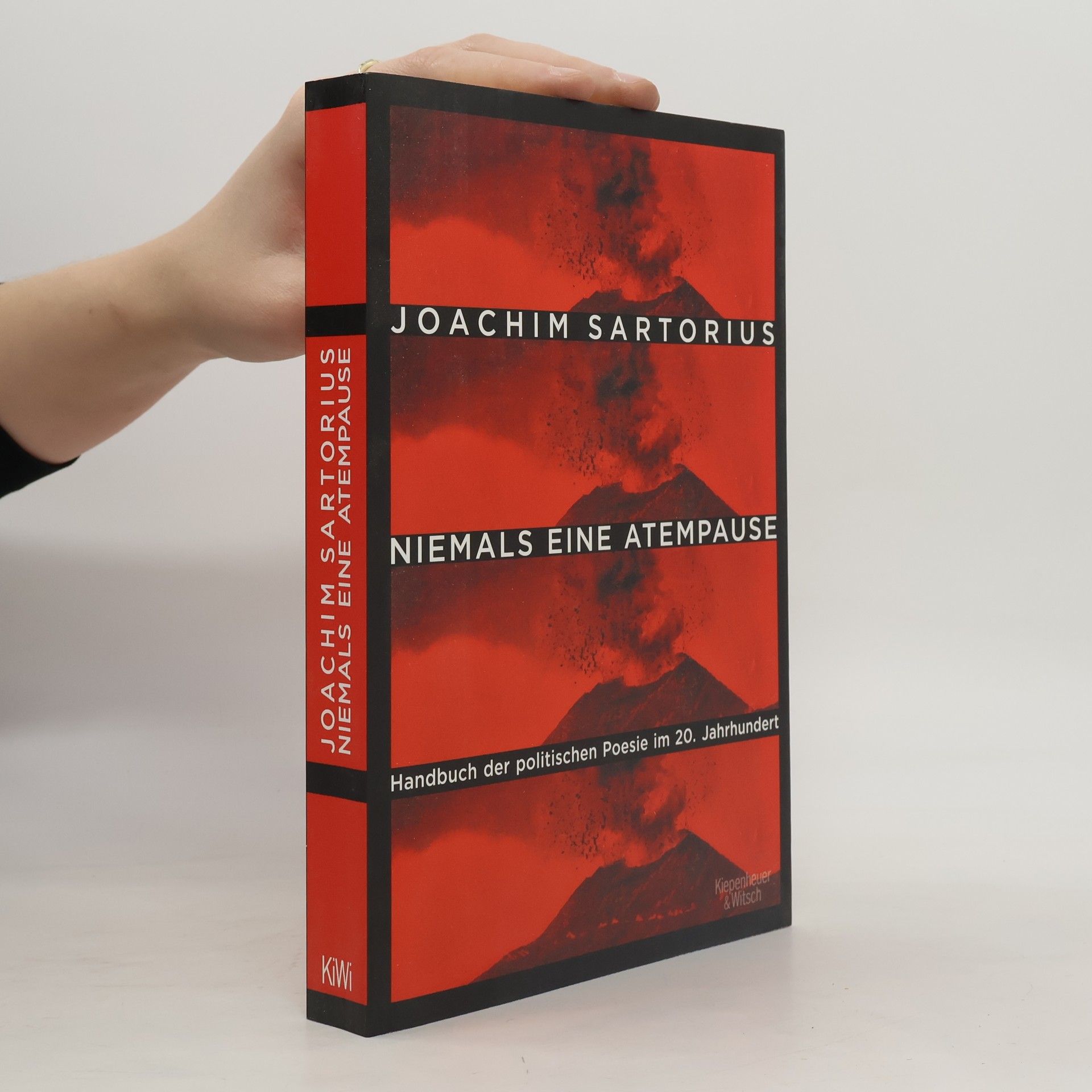'This book is a ravishing account of the enchantment of a poet by the landscape, rekindling in us the wish to buy a ticket at once and embark for the islands'-Orhan Pamuk
Joachim Sartorius Livres






My Cyprus
- 208pages
- 8 heures de lecture
Personal memoir by former German diplomat Joachim Sartorius who lived in Cyprus for three years.
Syracuse
- 156pages
- 6 heures de lecture
Exploring Sicilian history, the narrative vividly illustrates the blend of diverse cultures, styles, and attitudes. It captures the essence of a city rich in ancient brilliance, transitioning from baroque influences to contemporary life, revealing the layers of its vibrant heritage.
Hôtel des Étrangers
- 120pages
- 5 heures de lecture
Bilingual German/English edition of the 2008 verse collection by acclaimed poet Joachim Sartorius, with translation by Scott J. Thompson. This book is Number 1 in The Divers Collection. Cover art is based on a painting by Terry St. John.
Vor 2500 Jahren war Syrakus auf Sizilien für die Griechen das New York des Mittelmeers: Aischylos brachte hier Stücke zur Uraufführung, Platon reiste aus Athen gleich dreimal an, der Tyrann Dionysios ersteigerte die Lyra des Euripides, und die schmachtende Nymphe Arethusa versteckte sich im Papyrushain. Dass all das heute noch präsent ist, erfuhr Joachim Sartorius, als er Syrakus zu seinem zweiten Lebensmittelpunkt machte. An seiner Seite wandern wir mit Nymphen und Zyklopen durch Ortigia, die auf einer Insel liegende Altstadt, und treffen ganz heutige Barone, Polizisten, Künstler und Barbiere. Vor unseren Augen entfaltet Sartorius die Tiefe der sizilianischen Geschichte, das Neben- und Übereinander von Kulturen, Stilen und Lebenshaltungen und fügt Details der modernen und antiken, der barocken und der zeitgenössischen Welt zu einem impressionistischen Stadtbild von großer Leuchtkraft.
Eidechsen
Ein Portrait
Dem wachsamsten Tier der Welt verfällt Joachim Sartorius schon als Kind in Tunis, die Eidechse wird für ihn zur Chiffre für den Süden. Im Bann ihres starren, unverwandten Blicks, ihres Züngelns, des rasiermesserscharfen Eizahns, ihrer bekrallten Zehen und ihrer schillernden Färbung, berührt ihn der Hauch einer von Dinosauriern und Drachen bewohnten Urwelt. Indem er von der herrlichen Vielfalt der Eidechsen als Naturwesen und symbolische Geschöpfe erzählt, entfacht er für das undurchdringlich fremde Wesen mit dem kalten Blut ein wahres Echsenfieber. Mit seinem leidenschaftlichen Plädoyer für Schutzzonen für die Reptilien geleitet er letztendlich die Eidechse auf die Arche Noah, auf der sie dereinst keinen Platz gefunden hatte. »Je länger ich die Eidechse betrachte, umso mehr verliere ich mein eigenes Zeitgefühl und versinke selbst in eine Art von Echsentum. Die Eidechse ist unvermittelte Gegenwart, sie wird für mich, in ihrem gebannten, angespannten Hiersein, das heftig klopfende Herz der Erde.« - Joachim Sartorius
Mein Zypern oder die Geckos von Bellapais
- 190pages
- 7 heures de lecture
Zypern – das ist Weltgeschichte als Inselgeschichte. Aufgrund ihrer strategischen Lage war die Insel stets Objekt der Begierde fremder Mächte. Alle waren hier: Phönizier, Griechen, Römer, Byzantiner, Kreuzritter, Venezianer, Genuesen, Osmanen, Briten. Und alle haben Spuren hinterlassen: Die eindrucksvollsten Denkmäler – nach den römischen und frühbyzantinischen Ruinen von Salamis – stammen aus fränkischer und venezianischer Zeit, wie die Abtei von Bellapais, der befestigte Hafen von Kyrenia, die prächtigen Kathedralen von Nikosia und Famagusta, wo Shakespeares Othello spielt. Drei Jahre hat Joachim Sartorius auf Zypern gelebt – jetzt kehrt er dorthin zurück, zu den Kulturen und Legenden, zu Farben und Licht der Levante. Er spürt den vielen historischen und seelischen Sedimenten nach, der bewegten Geschichte der Insel, ihrer Teilung nach der türkischen Invasion im Jahre 1974 und der schwierigen aktuellen Situation. Und doch ist dieses Buch nicht das eines Historikers oder Politologen, sondern das eines Dichters, der an der Hand guter Freunde – Inselgriechen wie Inseltürken – Zypern zu verstehen sucht.
Niemals eine Atempause
Handbuch der politischen Poesie im 20. Jahrhundert
Eine Weltkarte der Katastrophen und Aufbrüche des 20. Jahrhunderts – und der Antworten, die die Lyriker darauf gaben. Dies ist ein von Lyrikern verfasstes Geschichtsbuch des 20. Jahrhunderts. Vergesst nicht den Ersten Weltkrieg, die Revolutionen, die Internationalen Brigaden im Spanischen Bürgerkrieg, das Elend von Flucht und Vertreibung, die Befreiungskämpfe in den Kolonien und die kubanische Revolution – all dies wird in unverwechselbarer Sprache thematisiert. Mit seinem »Handbuch der politischen Poesie« entwirft Joachim Sartorius eine Karte der Ereignisse, die das vergangene Jahrhundert prägten – vom armenischen Genozid bis zum Vietnamkrieg, von der Belagerung Sarajewos bis zur grünen Utopie. Über 100 Lyriker aus 50 Ländern werden präsentiert. Die Auswahl ist subjektiv, jedoch geprägt von den großen Zäsuren der Geschichte. Im 20. Jahrhundert war das Verhältnis von Politik und Poesie besonders prekär. Einige Dichter waren Mitläufer oder ergriffen Partei für das Schlimmste. In einer »Schreckenskammer« am Ende des Buches versammelt der Herausgeber Gedichte von Despoten und schlechte politische Gedichte. Die Dichter, um die es ihm geht, sind unbestechlich und zeichnen die Umbrüche der Geschichte nach. Ihre Gedichte stehen im größten Gegensatz zur Macht. Sartorius führt mit einem ausführlichen Vorwort in die Sammlung ein und stellt jedem Kapitel einen Text voran.
Joachim Sartorius ist einer der besten Kenner der Poesie des 20. Jahrhunderts. Mit diesem Band legt er seine ganz persönliche Seekarte der Lyrik vor, auf der er eine poetische Weltreise zum Glück über Abgründen, zu Fisch und Albatros und zu den Knochenwürfeln der Ertrunkenen verzeichnet hat.


